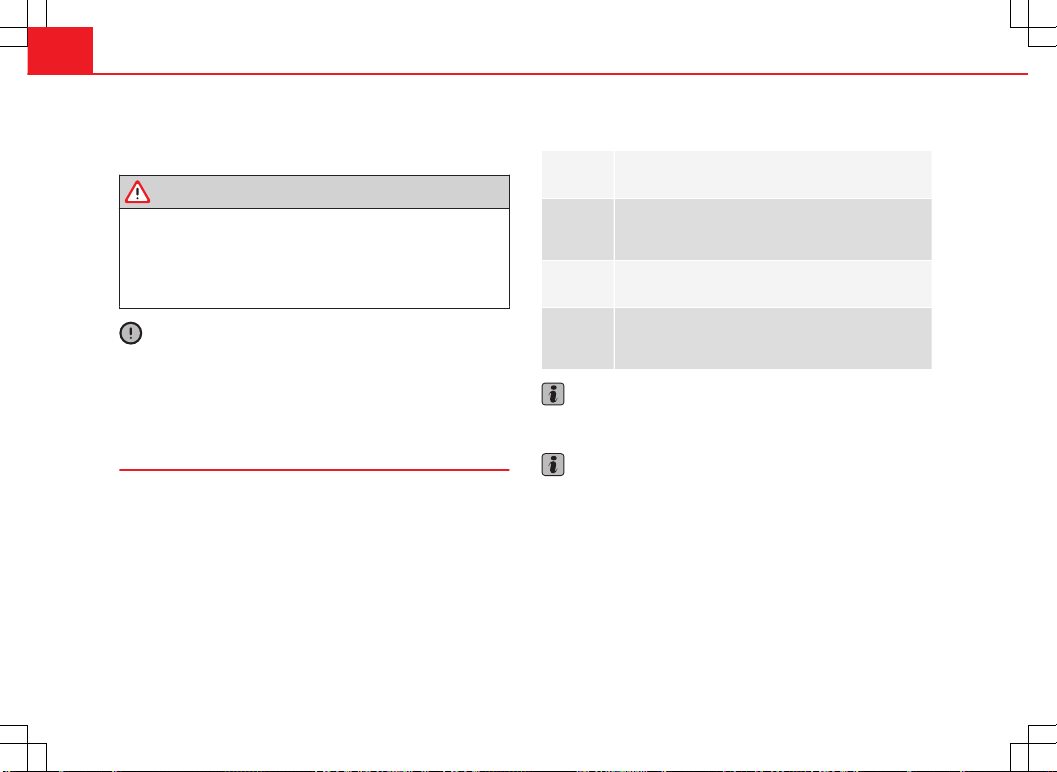Loading ...
Loading ...
Loading ...

282 Description of specifications
● Passengers.
● Total equipment.
● Roof load, included in the carrier.
WARNING
Exceeding the maximum authorised weight and the load on the axles
could cause damage to the vehicle, accidents and serious injuries.
● The real load on the axles should never exceed the maximum permit-
ted.
● The load and its distribution in the vehicle have effects on the vehicle
handling and the braking ability. Always drive at a suitable speed.
CAUTION
Distribute the load as uniformly and as low down on the vehicle as possible.
When transporting heavy objects in the luggage compartment, these
should be placed as far forward as possible or over the rear axle to have as
little influence on handling as possible.
Information on fuel consumption
The consumption and emission values indicated do not refer to one specific
vehicle. They are only to be used to compare the values of the different ve-
hicle versions. The fuel consumption and CO
2
emissions of a vehicle not on-
ly depend on the effective use of fuel. They also depend on your driving
style and other non-technical factors.
Calculation of fuel consumption
Fuel consumption and emission values are determined according to the cur-
rent version of the 715/2007/EC or 80/1268/EEC regulation and are valid
for the vehicle kerb weight. The specifications do not refer to an individual
vehicle. To measure the fuel consumption, two measuring cycles are carried
out on a rolling road test bed. The test criteria are as follows:
Urban cycle
Measurement of the urban cycle starts with an engine cold
start. City driving is then simulated at between 0 and 50 km/
h (0 and 31 mph).
Road cycle
In the road cycle simulation, the vehicle undergoes frequent
acceleration and braking in all gears, as in normal everyday
driving. The road speed ranges from 0 to 120 km/h (0 and
75 mph).
Combined
The average combined consumption is calculated with a
weighting of around 37 % for the urban cycle and 63 % for
the road cycle.
CO
2
emis-
sions of the
combination
The exhaust gases are collected during both driving cycles
to calculate carbon dioxide emissions (urban and road). The
gas composition is then analysed to evaluate the CO
2
con-
tent and other emissions.
Note
The kerb weight may vary according to the vehicle equipment. This could
raise consumption and the CO
2
emissions slightly.
Note
In practice, consumption values could be different to the values calculated
based on the 715/2007/EC or 80/1268/EEC regulations.
Loading ...
Loading ...
Loading ...